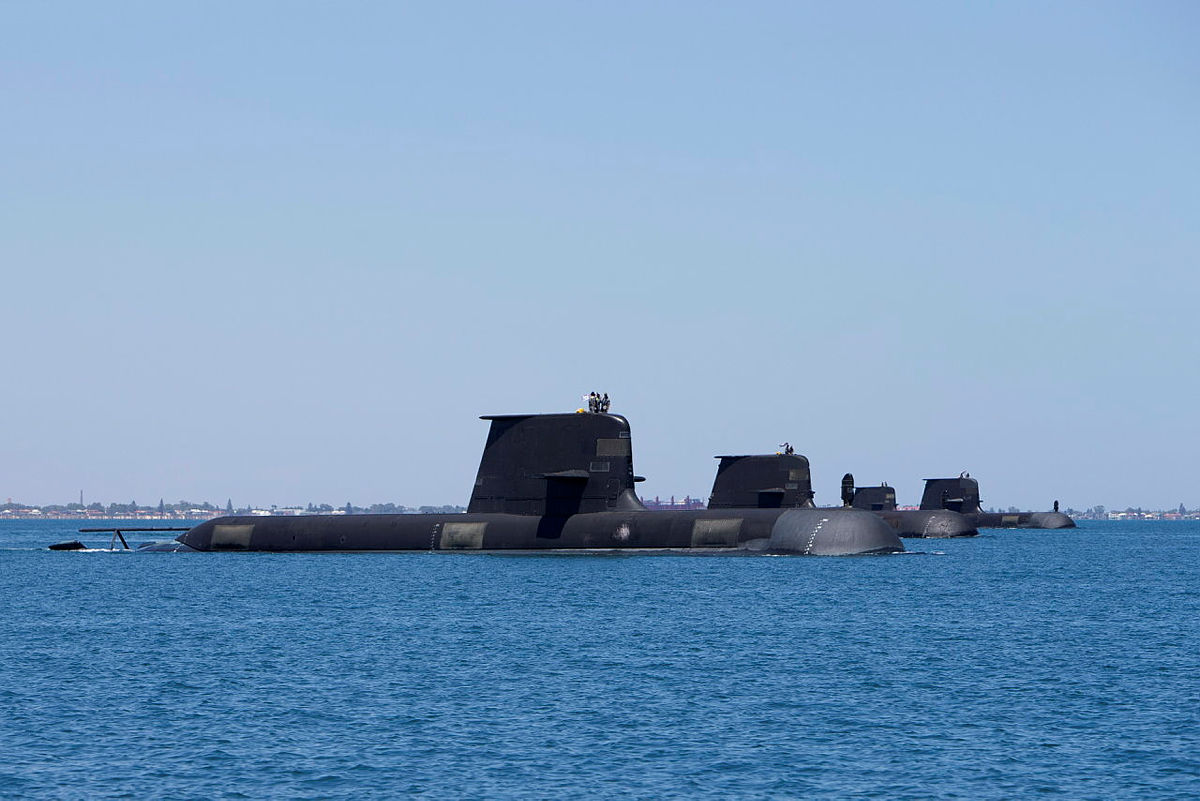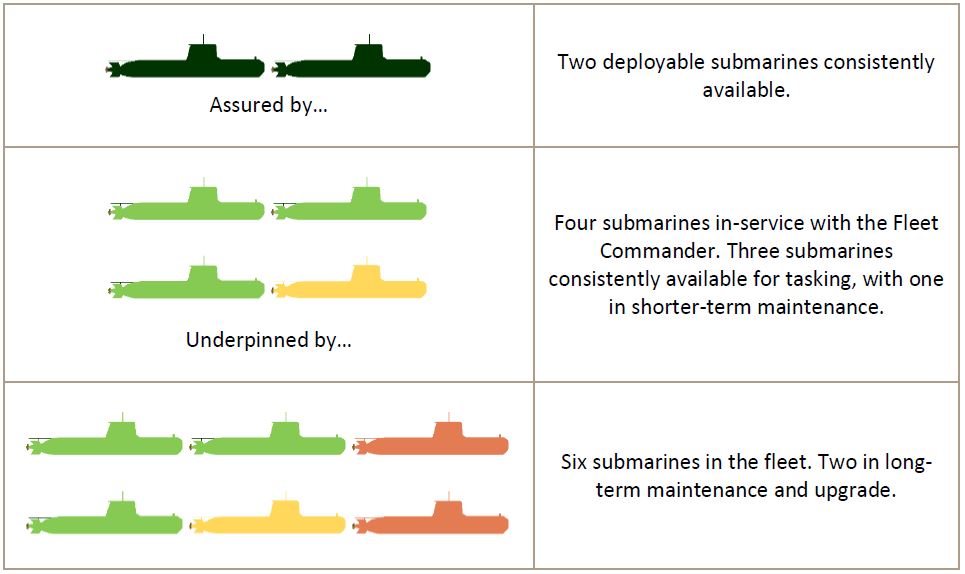 The following extract is from ASPI’s latest special report, Submarines: Your questions answered, which attempts to answer the many questions that Australians pose when it comes to the design, acquisition, cost, operational service and strategic implications of submarines.
The following extract is from ASPI’s latest special report, Submarines: Your questions answered, which attempts to answer the many questions that Australians pose when it comes to the design, acquisition, cost, operational service and strategic implications of submarines.
There’s a common rule of thumb in militaries known as ‘the rule of threes’: for every three platforms you have, you can deploy one. This is how the Australian Army is structured, and it broadly applies to ships and aircraft as well. Militaries can surge beyond this for short periods, but that’s not sustainable in the longer term due to deferred maintenance, lack of training, burnout of personnel and so on.
The rule of threes is reflected in the Royal Australian Navy’s current requirement for submarine availability. Of the six Collins-class submarines, two are in deep maintenance and upgrade. Four are available for service, with three available for tasking and one in shorter term maintenance. Of those four, only two are deployable.
The RAN’s submarine requirement: two from six

Source: John Coles,
Study into the business of sustaining Australia’s strategic Collins class submarine capability: beyond benchmark—May 2016, Australian Government, Canberra, 2016, page 5.
That doesn’t mean two will always be in the area of operations. Since the likely areas for submarine operations are far from Australia, a large percentage of any deployment is spent in transit. The exact percentage depends on the distance, the kind of operation and so on, but the net result is that it’s unlikely that the navy can sustain one submarine on station in an area such as the Malacca Strait or the South China Sea for an extended period. If, in a future conflict, the operational concept isn’t to maintain a submarine on station but to conduct offensive operations at a time of our own choosing, it might be possible to surge to two submarines in the area of operations, but that couldn’t be sustained.
The requirement for 12 submarines first appeared in the 2009 defence white paper. It wasn’t driven by the Department of Defence but appears to have come from then Prime Minister Kevin Rudd. Since then, it has remained a constant in Defence’s strategic planning documents.
With 12 submarines, it’s reasonable to assume that four would consistently be available for operations, with greater capacity to surge. That would be likely to allow the navy to keep one submarine on station at a long distance from Australia while simultaneously supporting some presence closer to home.
There are factors that influence presence and time on station other than just numbers of submarines. Increasing the endurance of the submarine could potentially have a large impact. The Collins is reputed to have around 50 days’ endurance. If, for example, a 10-day transit is required to reach the area of operations, a Collins boat effectively has only 30 days on station. If the future submarine has 70 days’ endurance (a 40% increase), that would result in 50 days on station in the same scenario (a 67% increase). Put another way, two Attack-class submarines would provide greater presence than three Collins. Also, if the pump-jet propulsor that’s to be used in the Attack class can increase its transit speed without consuming more fuel, that could reduce transit times and further increase time on station.
Since nuclear-propelled submarines have much greater transit speed than conventional submarines and endurance constrained only by the crew’s resilience, a smaller number of nuclear submarines would provide greater presence than 12 conventional submarines.
Another factor is the Attack-class submarine’s pump-jet propulsion system. While Defence has been tight-lipped about the pump-jet’s performance, it could potentially result in greater time on station by reducing transit times.
Reductions in the amount of time spent in maintenance would also improve availability. However, the Collins submarines are now already meeting and exceeding international benchmarks, so it could be difficult to achieve significant improvements beyond the current availability requirement and thus escape the rule of threes.
 Print This Post
Print This Post
 Source: John Coles, Study into the business of sustaining Australia’s strategic Collins class submarine capability: beyond benchmark—May 2016, Australian Government, Canberra, 2016, page 5.
Source: John Coles, Study into the business of sustaining Australia’s strategic Collins class submarine capability: beyond benchmark—May 2016, Australian Government, Canberra, 2016, page 5.